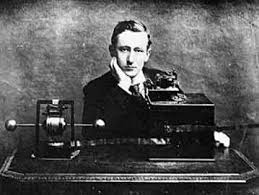16 April 2010
RADIO hams in Caister will be trying to contact other amateurs around the world next Saturday as part of the International Marconi Day celebrations.
The Norfolk Amateur Radio Club (NARC) will be running an all-day special event station with the callsign GB0CMS at Caister Lifeboat Visitor Centre to commemorate the village's original Marconi Wireless Station, which was established at Caister in 1900. The station was in a house in the High Street known as Pretoria Villa and its original purpose was to communicate with ships in the North Sea and the Cross Sand lightship.
On this day, the closest Saturday to Guglielmo Marconi's birthday, stations around the world are being set up at sites with historical links to the inventor's work. These include Poldhu in England; Cape Cod Massachusetts; Glace Bay, Nova Scotia; Villa Griffone, Bologna, Italy and many others.
Radio amateurs around the world will try to contact as many of these stations as possible to win an award.
NARC aim to run two stations at the Caister Lifeboat Visitor Centre - one using speech (telephony) and the other Morse code (telegraphy). Anyone making contact with either station will receive a special "QSL" card with a photograph of the original Caister Marconi Wireless Station on the front.
NARC public relation officer Steve Nichols, who is organising the event, said: "Any visitors will be made more than welcome. In addition to the radio stations the Visitor Centre will also be open, which offers a fascinating insight into the remarkable history of Caister Lifeboat."
The Caister station was connected by land line to Great Yarmouth Post Office and the Caister Coastguard Station. The main aerial mast behind the house was 150 feet high, the aerial wire being suspended between this and a slightly shorter mast situated on land where Lacon Road was later built.
The large front room of the house contained the main apparatus and was also used as the operating room. The engine for charging the accumulators was situated in a shed adjoining the house and the accumulators themselves were housed in a specially constructed annex.
The remainder of the premises were used as a dwelling house for the officer-in-charge.
The range of communication was 150 to 200 miles on the long wave (600m) and 100 miles on the short wave (300m).
In 1909 all the Marconi coastal stations were taken over by the Post Office.
In 1911 the Caister station was used to train lightship men in the use of telegraphy equipment.
In January 1915 the telegraph equipment on the Cross Sand lightship was transferred to the Parlour lightship and the Caister station was changed to 'general working' and not used for ship-to-shore work. Public use of the telegram facility provided at Caister was suspended for the duration of the WW1.
In 1921 plans were made for the reinstallation of wireless on Trinity House lightships, but this time the new wireless telephony was to replace telegraphy (Morse). New technology made the Caister station out of date and it finally closed in 1929. The masts were taken down and a few years later the house became the village Police Station.
(Yimber Gaviria, Colombia)



0 comentarios:
Publicar un comentario